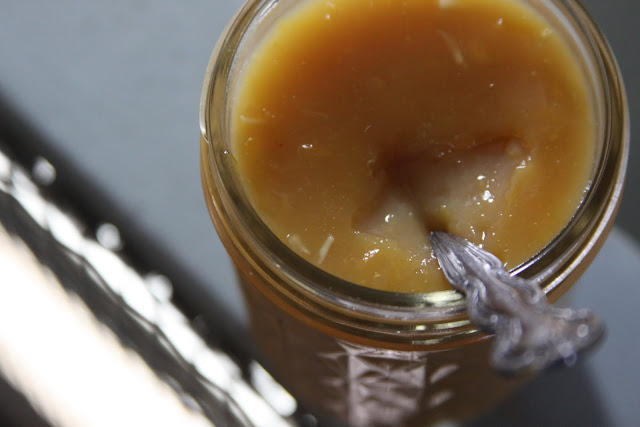Lately, I find that if I read in the morning, I am more relaxed. My thoughts are less scattered, and I am much more calm throughout the day. Lately, I have started turning off my laptop at night, so that it's not the first thing I reach for in the morning. Lately, I have started reading more frequently the way I used to...with the TV off. Lately, I find the entire rest of my day is spent on the computer.
I really mean the entire day.
I'm going to go blind and crazy from staring at this bright little screen. I know [Mom, Dad], welcome to the real world, no sympathy and so on. At any rate, all I'm saying is I'm going to try to control myself and post every other day instead of nearly every day like I have been.
In the mean time I will tell you a little more about my morning. Lately, I find satisfaction in the simplicity of making bread. It's still intimidating but with each passing day my apprehension to yeast lessens that much more. There is just something so blissfully comforting about relaxing with a hot cup of coffee while the day's grain bakes in preparation for lunch.
Now here's where my thoughts spin off, so bare with me a moment. I decided quite some time ago, that there is no reason to make my own yogurt. It's a lot of work and I'm very happy with the locally made Siggi's Icelandic-Style Skyr. But once again, lately, I find satisfaction in making the simple things.
I started thinking how nice it would be to wake up to fresh, homemade greek or icelandic style yogurt. Lemon flavored perhaps? I considered the possibilities for a while but in all honesty, it was only a matter of time until I gathered the courage to get started.
This morning, riding on the coat tails of my recent success with le pain du jour, I heated and incubated,
freshest organic skim milk I could find. It's currently cooling in the fridge to thicken. Tomorrow I will strain it thus completing my first batch of homemade yogurt. I know not many of you are going to run off to the kitchen and make your own but for what it's worth, I'll give you the recipe anyway.
Homemade Yogurt
If you choose to use skim, 1% or 2% milk I suggest adding the dry milk to help it thicken. If you choose whole milk, then leave it out. Makes 1 quart greek or a half gallon regular
A quick note about equipment: Most instructions I found used a heating pad to keep the yogurt warm during incubation. I can't stand one-use gadgets and refuse to buy one. However, short of moving to a tropical climate, the only substitute I have found is a crock-pot. This worked out alright for me since Max happens to have one, but I am determined to find an alternative for when I move out and no longer have that option. A candy thermometer is absolutely necessary for this since you must bring the milk up to 175* but not let it boil. They are inexpensive and easy to find (I bought mine for $4 in the supermarket).
1/2 Gallon organic milk (any fat percentage, I used skim)
2/3 cup organic dry milk (see headnote)
2-3 Tablespoons plain yogurt or greek yogurt preferably organic* (I used Chobani)
*Make sure the yogurt you choose has live active cultures
Combine milk and dry milk in a double boiler or large metal bowl with a water jacket. I used the bowl for my kitchen aid and a large frying pan filled with water. Gradually heat to 175* stirring now and then.
In the mean time, plug in a large crock-pot and turn to the "low" setting.
When the milk reaches the proper temperature, fill your sink about a 1/4 of the way with cold water. Remove the bowl from the stove and place it in the sink to cool. Alternatively you could just place it on the counter but this is much quicker. Turn crock-pot down to the "warm"setting and wait for the milk to cool to 110*.
Mix a little of the milk (about 1/2 cup is fine) in a bowl with the 2-3 tablespoons store bought yogurt. This things it and ensures that it will mix thoroughly with the rest of the milk. Stir it into the bowl of milk and poor the whole thing into the crock-pot. Cover and leave on "warm" for 7 hours.
After 7 hours, yogurt should have thickened and separated. The liquid on the top is whey and it means the bacteria did their job which is to eat the sugars or lactose in the milk. This causes lactic acid to form which is what gives yogurt it's tangy, tart taste.
Stir yogurt well to distribute curds into the whey and pour into containers.
Refrigerate overnight to thicken further.
The next morning stir well and enjoy.
To make greek yogurt: place a colander in a large bowl. Line the colander with a few layers cheesecloth and pour yogurt into the cloth. Make sure the bottom of the colander is at least 2 inches off the bottom of the bowl. You want the liquid to be able to drain without the yogurt sitting in it. Cover with a clean dishtowel and put the whole thing in the fridge for at least 3 hours or until it reaches desired thickness. Save the whey for another use, it will keep for a few weeks in the fridge.





































